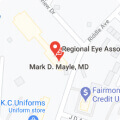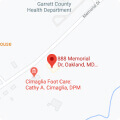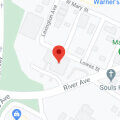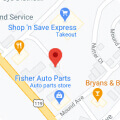Ages 20-40
LASIK
LASIK, or laser in-situ keratomileusis, is the fastest-growing and most accepted form of laser vision correction. LASIK can treat both nearsightedness and farsightedness with or without astigmatism.
PRK
PRK or PhotoRefractive Keratectomy is available to patients whose corneas are too thin for LASIK surgery. Like LASIK, we reshape the cornea to improve visual acuity. Unlike LASIK, Doctor’s use a flap that consists of only the epithelial layer of your cornea – the very topmost layer.
Visian ICL
The ICL is a revolutionary refractive lens that can correct up to -20 diopters of nearsightedness. The ICL procedure has been repeatedly improved through years of studies and continued refinement. This lens is a posterior chamber implant that is situated behind the iris and in front of the natural crystalline lens. It is also known as a Phakic IOL. The surgery is performed on an outpatient basis, which means that a patient has surgery and leaves the same day.
Comprehensive Eye Care
To maintain good vision and to keep your eyes healthy, it is important to have routine eye exams. For those with stable vision and without any eye disease, having routine eye exams every two years is important. At this exam your eyes will be dilated so the doctor can see into your retina. Your vision will be checked and you will be screened for eye diseases or disorders. If further testing is required a more comprehensive exam and possible testing will be scheduled.
Dry Eye Management
Some people do not produce enough tears or the appropriate quality of tears to keep the eye healthy and comfortable. This is known as dry eye. Tears are produced by two different methods. One method produces tears at a slow, steady rate and is responsible for normal eye lubrication. The other method produces large quantities of tears in response to eye irritation or emotions.
BOTOX® Cosmetic
The doctors at Regional Eye Associates have been administering BOTOX® injections for the medical treatment of blepharospasm (eyelid spasm) for over a decade. We are happy to announce that BOTOX® Cosmetic is now available and personally administered by these same experienced physicians to accurately and effectively treat fine facial lines and wrinkles for both men and women. BOTOX® has proven to be the best non-surgical form of facial rejuvenation and is capable of producing improvements in your appearance.
LATISSE®
LATISSE® makes lash growth possible because of its active ingredient: bimatoprost. Although the precise mechanism of action if not known, research suggests that the growth of eyelashes occurs by increasing the percent of hairs in, and the duration of, the anagen (or growth) phase. Lashes can grow longer, thicker and darker because bimatoprost can also prolong this growth phase.
Ages 40-60
LASIK Laser Vision Correction
LASIK, or laser in-situ keratomileusis, is the fastest-growing and most accepted form of laser vision correction. LASIK can treat both nearsightedness and farsightedness with or without astigmatism.
PRK
PRK or PhotoRefractive Keratectomy is available to patients whose corneas are too thin for LASIK surgery. Like LASIK, we reshape the cornea to improve visual acuity. Unlike LASIK, Doctor’s use a flap that consists of only the epithelial layer of your cornea – the very topmost layer.
Visian ICL
The ICL is a revolutionary refractive lens that can correct up to -20 diopters of nearsightedness. The ICL procedure has been repeatedly improved through years of studies and continued refinement. This lens is a posterior chamber implant that is situated behind the iris and in front of the natural crystalline lens. It is also known as a Phakic IOL. The surgery is performed on an outpatient basis, which means that a patient has surgery and leaves the same day.
Cataract Surgery
Normally, light passes through the crystal clear lens of the eye. A cataract is simply the clouding, or discoloring, of the lens. The cataract blocks the passage of light through the eye. Cataracts usually progress slowly and cause a gradual loss of sight. Using the most up to date methods and instrumentation, cataract surgery is typically performed using a small incision phacoemulsification technique.
Specialty Lens Implants
If you are nearing the age for cataract surgery and want a reliable vision correction solution premium lens implants might be a good idea. Cataracts can form at any point in your life but typically form after the age of 55 years old. These lens implants are also referred to as “lifestyle lens implants” because afford excellent vision sometimes without the need for glasses.
Clear Lens Extraction
As we age, the lens inside our eye loses its ability to focus both near and far. Most vision correction procedures attempt to change the focusing power of the cornea. Clear Lens Extraction, on the other hand, corrects nearsightedness or farsightedness by replacing the eye’s natural lens, which has the wrong power, with an artificial intraocular lens (IOL) implant that has the correct power for the eye.
Dry Eye Management
Some people do not produce enough tears or the appropriate quality of tears to keep the eye healthy and comfortable. This is known as dry eye. Tears are produced by two different methods. One method produces tears at a slow, steady rate and is responsible for normal eye lubrication. The other method produces large quantities of tears in response to eye irritation or emotions.
Glaucoma
Glaucoma is one of the leading causes of preventable blindness in the United States and is particularly dangerous because it can steal sight without warning or symptoms. Statistics released and reported by the Glaucoma Research Foundation indicates that over four million Americans have Glaucoma … and only half are aware they have it!
Diabetic Eye Care
Having regular eye exams is key to a healthy eye care plan for people who have diabetes. Diabetic retinopathy is the most common diabetic eye disease and a leading cause of blindness in American adults.
Comprehensive Eye Care
Routine visits to our office for eye exams are vital to diagnose vision issues early. Prepare yourself for your exam by taking a look at a list of typical symptoms and things to look out for.
BOTOX® Cosmetic
Do you have forehead wrinkles, crow’s feet or frown lines? Regional Eye Associates have been treating their clients with BOTOX treatments for more than 10 years.
LATISSE®
LATISSE® is a prescription treatment for hypotrichosis (inadequate or not enough lashes) to grow eyelashes longer, fuller, darker.
Blepharoplasty
This surgical eye procedure designed to remove fat along with excess skin from the upper and lower eyelids. If a patient has drooping eyelids or heavy bags under the eyes, blepharoplasty can improve both vision quality and facial appearance.
Ages 60-80+
Cataract Surgery
Normally, light passes through the crystal clear lens of the eye. A cataract is simply the clouding, or discoloring, of the lens. The cataract blocks the passage of light through the eye. Cataracts usually progress slowly and cause a gradual loss of sight. Using the most up to date methods and instrumentation, cataract surgery is typically performed using a small incision phacoemulsification technique.
Specialty Lens Implants
If you are nearing the age for cataract surgery and want a reliable vision correction solution premium lens implants might be a good idea. Cataracts can form at any point in your life but typically form after the age of 55 years old. These lens implants are also referred to as “lifestyle lens implants” because afford excellent vision sometimes without the need for glasses.
Clear Lens Extraction
As we age, the lens inside our eye loses its ability to focus both near and far. Most vision correction procedures attempt to change the focusing power of the cornea. Clear Lens Extraction, on the other hand, corrects nearsightedness or farsightedness by replacing the eye’s natural lens, which has the wrong power, with an artificial intraocular lens (IOL) implant that has the correct power for the eye.
Dry Eye Management
Some people do not produce enough tears or the appropriate quality of tears to keep the eye healthy and comfortable. This is known as dry eye. Tears are produced by two different methods. One method produces tears at a slow, steady rate and is responsible for normal eye lubrication. The other method produces large quantities of tears in response to eye irritation or emotions.
Glaucoma
Glaucoma is one of the leading causes of preventable blindness in the United States and is particularly dangerous because it can steal sight without warning or symptoms. Statistics released and reported by the Glaucoma Research Foundation indicates that over four million Americans have Glaucoma … and only half are aware they have it!
Diabetic Eye Care
Having regular eye exams is key to a healthy eye care plan for people who have diabetes. Diabetic retinopathy is the most common diabetic eye disease and a leading cause of blindness in American adults.
Macular Degeneration
Age-related macular degeneration (ARMD or AMD), is a disease of the center part of the retina called the macula. The macula controls our central vision and enables us to see fine details clearly. It is what allows us to read, drive a car, and recognize faces or colors.
Comprehensive Eye Care
Routine visits to our office for eye exams is vital to diagnose vision issues early. Prepare yourself for your exam by taking a look at a list of typical symptoms and things to look out for.
BOTOX® Cosmetic
Do you have forehead wrinkles, crow’s feet or frown lines? Regional Eye Associates have been treating their clients with BOTOX treatments for more than 10 years.
LATISSE®
LATISSE® is a prescription treatment for hypotrichosis (inadequate or not enough lashes) to grow eyelashes longer, fuller, darker.
Blepharoplasty
This surgical eye procedure designed to remove fat along with excess skin from the upper and lower eyelids. If a patient has drooping eyelids or heavy bags under the eyes, blepharoplasty can improve both vision quality and facial appearance.






